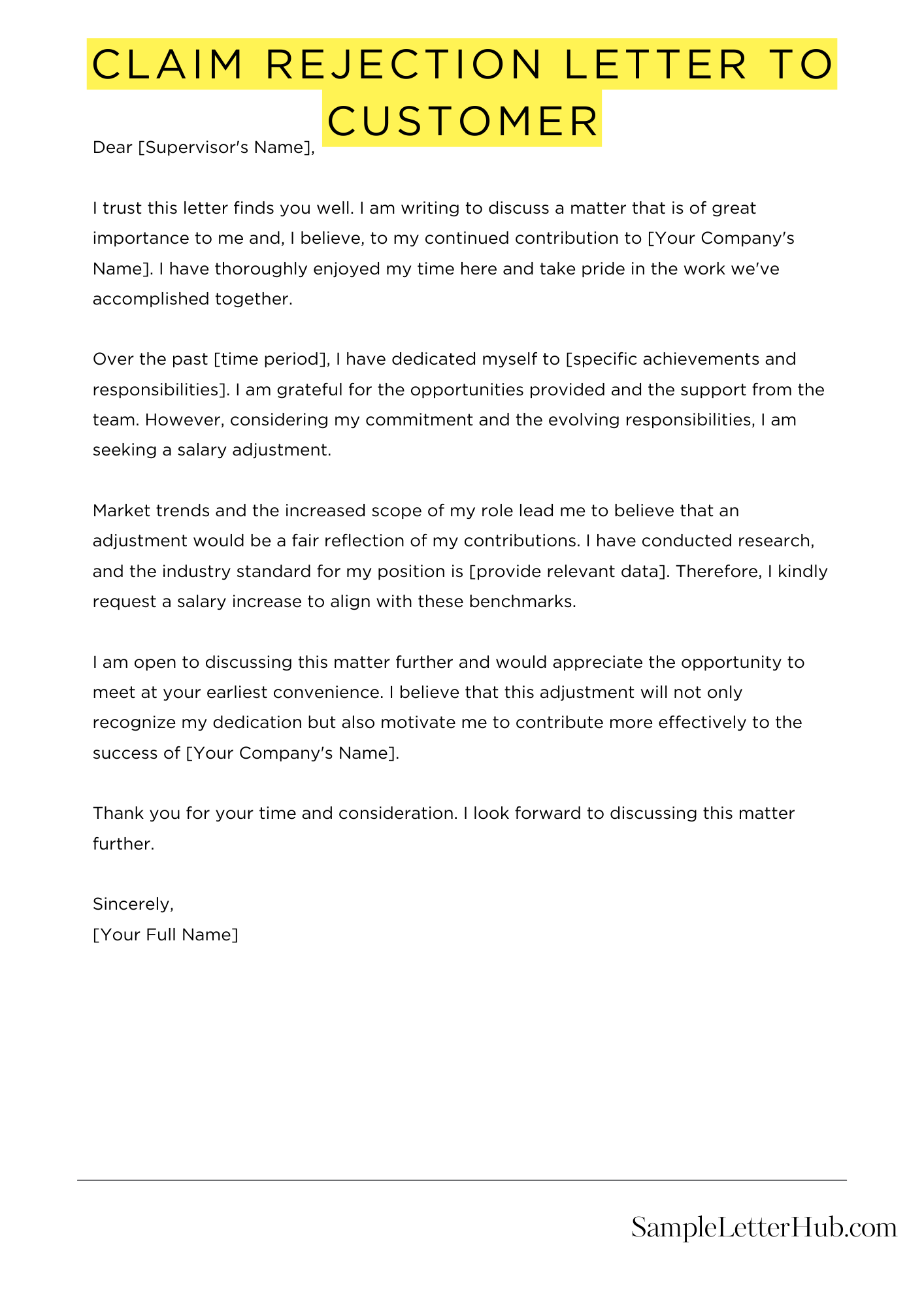A claim rejection letter is a formal document sent by a company to a customer to inform them that their claim has been denied. It explains the reasons for the rejection and provides information on the customer’s options for appealing the decision.
In this article, we will provide you with several templates, examples, and samples of claim rejection letters to customers. These letters are designed to help you write a clear and concise letter that effectively communicates the reason for the claim denial.
By using one of our templates, you can save time and ensure that your letter is professional and well-written.
Claim Rejection Letter
Dear [Customer Name],
We have received your claim for [claim amount] for [claim reason]. We have carefully reviewed your claim and regret to inform you that we cannot approve it.
Our investigation has determined that [reason for rejection]. We understand that this may be disappointing, but we must adhere to our policies and procedures.
We have attached a copy of our policy for your reference. Please note that [relevant policy section].
We value your business and appreciate your understanding. If you have any further questions, please do not hesitate to contact us.
Sincerely,
[Your Name]

How to Write a Claim Rejection Letter to a Customer
Writing a claim rejection letter to a customer can be a difficult task. You want to be clear and concise in your explanation of why the claim is being denied, but you also want to be polite and professional. Here are a few tips on how to write a claim rejection letter:
1. Start with a Salutation
Begin your letter with a salutation, such as “Dear [Customer Name].”
2. State the Purpose of the Letter
In the first paragraph, state the purpose of the letter. For example, you could write, “I am writing to inform you that your claim for [claim amount] has been denied.”
3. Explain the Reason for the Denial
In the next paragraph, explain the reason for the denial. Be specific and provide evidence to support your decision. For example, you could write, “Your claim was denied because the damage to your property was not caused by our product.”
4. Offer an Alternative Solution
If possible, offer an alternative solution to the customer. For example, you could offer a refund or a replacement product.
5. End with a Polite Closing
End your letter with a polite closing, such as “Sincerely, [Your Name].”
6. Proofread Your Letter
Before you send your letter, proofread it carefully for any errors in grammar or spelling.
7. Send Your Letter
Send your letter to the customer via mail or email.
FAQs about Claim Rejection Letter To Customer
What is a claim rejection letter?
A claim rejection letter is a formal document sent by an insurance company to a policyholder informing them that their claim has been denied. The letter will typically state the reason for the denial and provide information on the policyholder’s options for appealing the decision.
What are the most common reasons for claim rejection?
The most common reasons for claim rejection include:
- The claim is not covered under the policy.
- The policyholder has not paid their premiums.
- The claim is fraudulent.
- The policyholder has not provided sufficient evidence to support their claim.
What should I do if my claim is rejected?
If your claim is rejected, you should first review the letter carefully to understand the reason for the denial. You can then contact your insurance company to discuss the decision and ask for more information. If you believe that the decision is incorrect, you can file an appeal.
How do I file an appeal?
To file an appeal, you will need to write a letter to your insurance company. The letter should include your name, policy number, and the date of the claim rejection letter. You should also state the reason why you are appealing the decision and provide any additional evidence that you have to support your claim.
What happens after I file an appeal?
After you file an appeal, your insurance company will review your request. They may ask you for additional information or schedule a meeting to discuss your claim. The insurance company will then make a final decision on your appeal. If your appeal is denied, you may have the option to file a complaint with the state insurance department.

